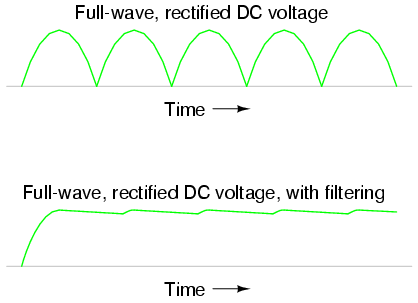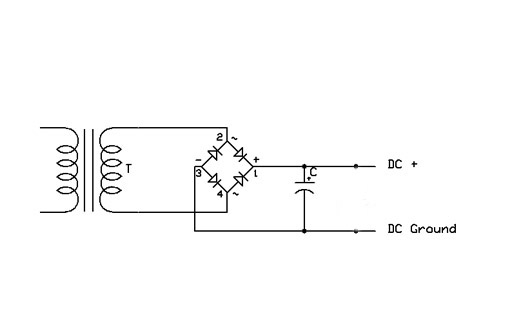Every so called audiophile, once in his truthless life, will look himself at the mirror, and ask himself, one fundamental question:
Is my power supply good enough?
Terrible drama then, desperation, no certainesses, no peace. Then he will start to browse and google compulsively, ask in forums, call his mom, loose hairs etc etc.
Well, at this point, there is only one thing you can do. Get a better one. So, for those of you in these miserable condition, here’s a tip on how to choose wisely a good power supply for Raspberry Pi.
Let’s introduce what are we talking about
Why Power supply is so important? Trivially speaking, we can say that our fancy audio\electronic gizmos work with electricity. And, the better and the most stable electricity we can give to them, the better they will work. This comes to an extreme importance in Audio, but can be true also for all kind of electrical equipment. Let’s see why:
Most circuits works with DC. DC is direct current, which is:
used to refer to power systems that use only one polarity of voltage or current, and to refer to the constant, zero-frequency, or slowly varying local mean value of a voltage or current.For example, the voltage across a DC voltage source is constant as is the current through a DC current source. The DC solution of an electric circuit is the solution where all voltages and currents are constant. It can be shown that any stationary voltage or current waveform can be decomposed into a sum of a DC component and a zero-mean time-varying component; the DC component is defined to be the expected value, or the average value of the voltage or current over all time. http://en.wikipedia.org/wiki/Direct_current
Usually, direct current is obtained by rectifying AC (Alternated current), which flows by our wall socket. A rectifier is an electrical device that converts alternating current (AC), which periodically reverses direction, to direct current (DC), which flows in only one direction.
This is the first quality sensible step that our electrons are faced to do. In these process, it could happen that some residuals of the AC’s typical voltage oscillations will remain in the DC stream, producing some kind of “fluctuation” from our desired voltage.
This phenomenon is called ripple:
The most common meaning of ripple in electrical science is the small unwanted residual periodic variation of the direct current (dc) output of a power supply which has been derived from analternating current (ac) source. This ripple is due to incomplete suppression of the alternating waveform within the power supply.
This could be better described with picture below:
As you can see, by simply rectifiying AC (first scenario) we will end with lot of oscillations in voltage, this will result in poor performance (in audio domains). As for our Raspberry Pi, a power supply with high ripple will result in malfunctions, sd card corruptions etc etc.
In the second picture, we’ll see how a filter applied to our power supply can dramatically reduce ripple. This more stable voltage will result in a HUGE improvement in audio applications, and for our raspberry Pi will mean better working conditions.
Those of you who already know about this matter could find this explanation extremely reductive and simple. I know it is, but I’m trying to keep things simple.
So, what power supply should I choose? There are 2 main categories:
Linear power supplies
These are the type we discussed earlier, as you can see the first component (from left side) is a power trasformer, this transform the voltage from our wall socket to a desired one (let’s say 24 volts), passing this step the current is still alternated.
Then it passes trough some diodes (1,2,3,4), their function is to rectify current and make it dc. Passing this step our DC is very dirty, and that’s why there will be some filtering capacitors (C) to smooth it out and reduce ripple. This is a very simple schematic, but should give you the idea. Usually, where a given voltage with very low ripple is needed you’ll use also a voltage regulator. This component will reduce the imput voltage to a given one, and provide very low ripple output. Capacitors are often used to further smooth the output voltage, and their quality is hugely responsible of subsequent psu quality.
The main disadvantage of these kind of power supply is their efficiency. Lot of energy got wasted in this process (as heat, for example) and they usually drain lot more current than they put out.
Then, we’ll find
Switching power supply
A switched-mode power supply (switching-mode power supply, SMPS, or switcher) is an electronic power supply that incorporates a switching regulator to convert electrical power efficiently. Like other power supplies, an SMPS transfers power from a source, like mains power, to a load, such as a personal computer, while converting voltage and current characteristics. An SMPS is usually employed to efficiently provide a regulated output voltage, typically at a level different from the input voltage.
Unlike a linear power supply, the pass transistor of a switching-mode supply continually switches between low-dissipation, full-on and full-off states, and spends very little time in the high dissipation transitions (which minimizes wasted energy). Ideally, a switched-mode power supply dissipates no power. Voltage regulation is achieved by varying the ratio of on-to-off time.
So as you can understand, switching power supplies achieve the same result by turning on and off repeatedly (thousands of times per second) the electrical stream, resulting in better efficiency (no rectification, no voltage transformation, no voltage regulation). The main disadvantage are in terms of quality. Switching power supply usually have higher ripple than linear power supplies.
So now the choice is between quality and efficiency. Since our raspberry Pi will draw as much as 700 mA (current) at 5 ± 0,25 volts (voltage) we should choose a psu which can output at least 1 amp (extra 300mA for connected devices such as DACs or usb keys), whith a voltage between 4,75 and 5,25 volts. Any different value from these will (and I mean, it will) result in SD Card corruption, especially if you decided to overclock your PI.
By choosing a linear power supply for Raspberry Pi, like
, you’re sure gettin highest quality power supply, but this will result in lot of enery wasted and a higher electricity bill (of course, relatively speaking) (please also mind that you should change the DC jack in favour of a microUSB plug). By the other hand a switched mode power supply for Raspberry Pi like this (or
if you’re on the other side of the Atlantic) will be an energy saving savy choice but quality wise, is the worst scenario you can get.
And after telling you all of this, I’ll let you cry in tears and desperately wating to know what to do by saying goodbye !
Next , will come a comparison of multiple power supply for Raspberry Pi, and a project of a custom power supply which will hopefully satisfy both quality and efficiency!





Pingback: Linux-based End-to-End Music Server - Page 2
Pingback: Raspberry Pi gets audiophile credentials thanks to RaspyFi Linux distro | iPad WorkshopiPad Workshop
Pingback: Raspberry Pi gets audiophile credentials thanks to RaspyFi Linux distro » Free Warez at putraidomandiri.com
Pingback: Raspberry Pi gets audiophile credentials thanks to RaspyFi Linux distro | TechBoom
Pingback: Raspberry Pi gets audiophile credentials thanks to RaspyFi Linux distro | T H E L O V E O F T E C H
Pingback: Raspberry Pi gets audiophile credentials thanks to RaspyFi Linux distro | News By The Numbers
Pingback: Today’s Links September 10, 2013
Pingback: » Raspberry Pi gets audiophile credentials thanks to RaspyFi Linux distro - OnlineExamsForU
Pingback: PromoMag | Raspberry Pi gets audiophile credentials thanks to RaspyFi Linux distro
Pingback: Raspberry Pi gets audiophile credentials thanks to RaspyFi Linux distro | Kronosim
Pingback: Raspberry Pi gets audiophile credentials thanks to RaspyFi Linux distro | EBEN SYSTEMS
Pingback: Raspberry Pi gets audiophile credentials thanks to RaspyFi Linux distro | NewsGram
Pingback: Raspberry Pi gets audiophile credentials thanks to RaspyFi Linux distro « bogdi dot com